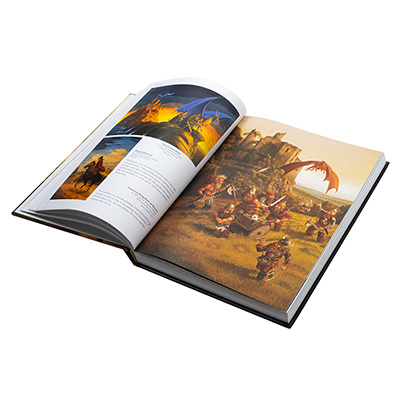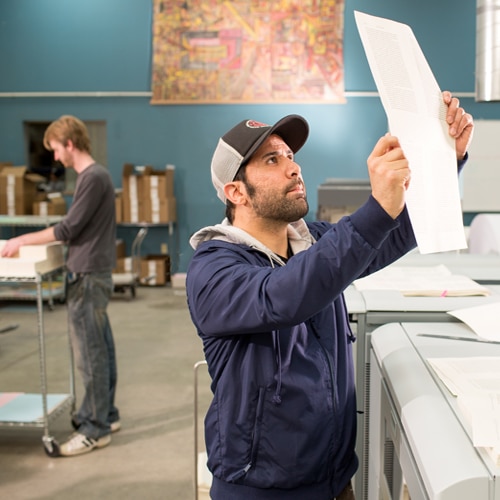Discover the Crucial Guide to Art Book Printing for Aspiring Artists and Publishers
As a hopeful artist or publisher, comprehending the nuances of art book printing is crucial to bringing your vision to life. What are the key components you should concentrate on to develop a sensational art book that truly represents your job?
Recognizing Various Sorts Of Art Books
When you dive into the world of art books, you'll quickly find that they are available in numerous kinds, each tailored to different artistic expressions and audiences. Coffee table publications usually showcase sensational visuals, excellent for informal browsing, while monographs dive deep into a private musician's job, offering context and understandings. If you have an interest in particular art activities, exhibit magazines supply thorough documentation of programs, including essays and critiques.
For training objectives, art manuals and strategy books assist you through various mediums and styles, making them essential for aspiring artists. Lastly, minimal version or artist books obscure the lines in between art and literary works, commonly incorporating unique design aspects or hand-crafted functions. Understanding these kinds aids you establish what reverberates with you and what may best suit your target market. Each format serves its objective, and recognizing their differences can improve your art book trip.
Choosing the Right Paper and Materials
Selecting the ideal paper and materials can greatly influence the general high quality and feeling of your art book. Begin by thinking about the kind of artwork you have. For vibrant colors and detailed information, choose a glossy finish or a heavyweight matte paper that enhances aesthetic depth. If your job features softer tones or appearances, an all-natural or uncoated paper can give a cozy, inviting touch.
Consider the weight of the paper, as well. Thicker options usually provide a more professional look, while lighter documents can lower printing prices. Don't forget the binding materials; a strong cover can protect your web pages and add to guide's visual.
Lastly, take into consideration sustainability. Eco-friendly choices are getting popularity and can reflect your values as a musician. By carefully picking your paper and materials, you'll ensure that your art book not just looks excellent but additionally really feels special in the hands of your viewers.

Choosing the most effective Printing Strategies
When it involves printing your art book, selecting between balanced out and digital printing can significantly influence your final product. You'll additionally intend to consider how paper top quality impacts the total appearance and feeling of your artwork. Allow's discover these vital printing techniques to find the best suitable for your job.
Balanced Out vs. Digital Printing
While both offset and digital printing have their advantages, choosing the ideal strategy for your art book can significantly influence the last product. Balanced out printing uses high-quality photos and vivid shades, making it excellent for bigger print runs. Eventually, your option should align with your imaginative vision and distribution technique, ensuring that your art book reflects the high quality you desire.
Paper Quality Factors To Consider
Selecting the best paper quality can significantly boost the aesthetic appeal and responsive experience of your art book. Begin by considering the weight and appearance of the paper. Larger paper typically really feels more elegant and can better display lively colors and elaborate details. For prints, a glossy surface can make pictures pop, while a matte coating offers a softer, extra subtle look. Do not ignore the paper's brightness; brighter sheets can enhance color accuracy and contrast.
Following, assume concerning the sustainability of your option. Green choices are becoming significantly popular and can interest environmentally-conscious readers. Ultimately, request samples to see how various documents deal with your artwork, guaranteeing the last item mirrors your vision perfectly.
Making Sure Color Accuracy in Your Prints
To attain magnificent prints, you require to concentrate on color accuracy from the beginning. You'll desire to use shade calibration methods to confirm your display and printer remain in sync. Additionally, proofing your job prior to the last print run can aid capture any inconsistencies, guaranteeing your art looks simply as you visualized.
Color Calibration Strategies
Assuring shade accuracy in your prints begins with effective color calibration methods that help maintain consistency in between your electronic photos and last published items. Calibrate your monitor using hardware calibration tools to achieve the finest color representation. This verifies that what you see on-screen suits what obtains printed. Next off, choose a color profile matched for your printing procedure, like CMYK for print materials. Frequently check your printer's settings and preserve it to avoid color shifts. It's additionally vital to make use of high-quality paper that enhances your inks, as different surface areas can substantially impact shade result. By continually using these methods, you'll improve the general high quality of your art prints and far better communicate your imaginative vision.
Proofing for Precision
While you might assume your electronic pictures are all set for print, proofing is vital for achieving shade precision. Prior to committing to a complete print run, always request an evidence from your printer.
If changes are required, communicate clearly with your printer about your desired outcomes. Do not wait to request numerous evidence if needed; it's worth the investment to get it. Ultimately, complete proofing warranties that your artwork is represented as you pictured it, preserving your creative stability throughout the printing procedure.

Designing Layouts That Enhance Your Artwork
When you create formats for your art book, it's important to ponder just how each element interacts with your artwork. Objective for my latest blog post an equilibrium between visuals and text, ensuring neither eclipses the various other. Use white room purposefully; it offers your artwork area to breathe and accentuates its information.
Take into consideration the circulation of your book. Arrange photos in a manner that overviews the visitor's eye, creating a narrative or thematic progression. art book. Vary the sizes and orientations of your artwork to maintain the layout vibrant and fascinating
Select fonts that enhance your artwork without distracting from it. Keep message concise and appropriate, supplying context or insight that enhances the visitor's experience.
Lastly, examination various formats. Publish examples to see how the layouts equate theoretically, and readjust as needed. By thoughtfully designing your designs, you'll create a visually appealing art book that reverberates with your target market.
Binding Options for a Specialist End Up
Selecting the right binding option can significantly impact the general discussion of your art book. You'll intend to consider both appearances and durability when making your selection. Popular alternatives consist of excellent binding, which uses a sleek appearance and is excellent for thicker books; saddle stitching, perfect for smaller brochures; and spiral binding, which enables web pages to lay level for easy viewing.
If you're intending for a premium feel, instance binding is a superb selection, supplying a strong check it out cover and an expert look (art book). Don't forget the cover material; options like fabric, leather, or a glossy surface can elevate your book's allure
Whatever choice you select, ensure it enhances your art work and boosts the reader's experience. Take your time to evaluate the pros and cons of each method, so your last product shows the quality of your imaginative vision.
Preparing Your Apply For Publish Preparedness
To assure your art book is print-ready, you'll need to pay close interest to file preparation. Begin by setting your record dimension to match your wanted print dimensions.
Likewise, install your font styles or convert message to lays out to avoid any type of typeface concerns. Conserve your work in a PDF layout, as this is the most approved data kind for printers. Double-check your files for any kind of typos or design errors, as modifications can be pricey after the truth. Consider creating an evidence to review before the final print run. Complying with these steps will certainly help you attain a sleek, professional art book.
Often Asked Inquiries
What Is the Average Expense of Publishing an Art Book?
The average expense of printing an art book differs, yet you can anticipate to pay anywhere from $5 to $20 per duplicate, relying on aspects like dimension, paper high quality, and printing quantity.
How Can I Find a Reliable Printing Firm?
To find a reliable printing business, begin by looking into on the internet testimonials my review here and asking fellow artists for recommendations. Contrast quotes, check profiles, and connect your needs clearly to guarantee they understand your vision and top quality assumptions.
What Is the Regular Turn-around Time for Printing?
The common turnaround time for printing differs but usually ranges from one to 4 weeks. Elements like task intricacy and quantity can affect this. Always confirm with your selected printer for certain timelines and assumptions.
Can I Publish My Art Book in Limited Quantities?
Yes, you can certainly print your art book in minimal amounts. Numerous printing business provide short-run options, permitting you to generate simply the number you require, making it easier to take care of prices and stock.
What Lawful Factors To Consider Should I Know for My Art Book?
You must consider copyright, licensing contracts, and version launches when developing your art book. Make sure you deserve to use all pictures and message, shielding on your own from potential legal problems in the future.